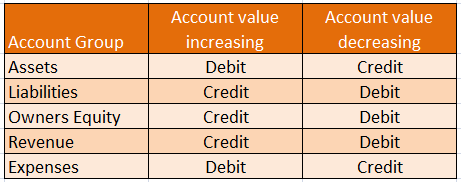
Read on to find out more about the links between bipolar disorder and alcohol consumption. Turning to alcohol or other illegal drugs might seem helpful in coping with painful symptoms in the short term, but it can have severe and disruptive consequences to daily life. Atypical antipsychotics (aAP) have increasingly become can you overdose on kratom a treatment of choice in BD. The only exception was aripiprazole which reduced significantly number of drinks and heavy drinking days in one study (116). Whereas, the incidence of BD across countries and cultures is within a similar range, reported rates for AUD differ considerably due to cultural and religious diversity.
Antidepressants and Bipolar Disorder: The Plot Thickens
The other hypothesis, namely that patients with BD use alcohol to self-medicate their mood symptoms, or drink a result of their tendency towards impulsive behaviours, may also apply (Swann et al., 2003). It is likely, however, that within the spectrum of comorbid AUD and BD, there lies a variety of orders and associations, and that no one hypothesis explains the full spectrum of presentations. Consistent with this is the fact that when comorbid groups are studied, some patients present with BD first, some with AUD first, and some patients present with both simultaneously (Strakowski et al., 2005a). Those with AUD first tend to be older and tend to recover more quickly, whereas those with BD first tend to spend more time with affective disorder, and have more symptoms of AUD (Strakowski et al., 2005a). There are some gender differences also in that more men than women with BD tend to be alcoholic (Frye et al., 2003).
All About Substance Use and Bipolar Disorder
In summary, only few psychotherapeutic interventions have been studied in a randomized study design and mostly only by one research group. For contingency management and motivational therapy in comorbid BD and SUD, only low-level evidence exists, e.g., non-randomized, prospective studies, case series or retrospective studies. In the CANMAT guidelines they are only recommended as second-choice in situations where first choice treatments are not indicated or cannot be used, or when first-choice treatments have not worked (89).
Do alcohol use disorders destabilize the course of bipolar disorder?
No statistically significant treatment differences were detected in drinking or mood outcomes. Post-hoc analysis showed that acamprosate treatment resulted in lower Clinical Global Impression scores of substance abuse severity in the last two weeks of the trial (Tolliver et al., 2012). Bipolar disorder and alcohol use disorder (also called alcoholism and alcohol addiction) frequently occur together. It is estimated that 40% to 70% of individuals with bipolar disorder will be diagnosed with AUD during their lifetimes. Although the connection between these two disorders isn’t entirely clear, some factors seem to contribute. Medication compliance is an important issue to consider when assessing the effectiveness of medications.
Comorbid Bipolar and Alcohol Use Disorder—A Therapeutic Challenge
Bipolar disorder, often called manic depression, is a mood disorder that is characterized by extreme fluctuations in mood from euphoria to severe depression, interspersed with periods of normal mood (i.e., euthymia). Bipolar disorder represents a significant public health problem, which often goes undiagnosed and untreated for lengthy periods. Bipolar disorder affects approximately 1 to 2 percent of the population and often starts in early adulthood. Bipolar disorder and alcohol use disorder represent a significant comorbid population, which is significantly worse than either diagnosis alone in presentation, duration, co-morbidity, cost, suicide rate, and poor response to treatment.

Allostatic load and depressive symptoms in older adults: An analysis of 12-year panel data
The relationship between bipolar disorder and alcohol use is complex and multifaceted. While alcohol can provide temporary relief from bipolar symptoms, its long-term effects are overwhelmingly negative, often exacerbating the very symptoms individuals are trying to alleviate. In some cases, excessive alcohol use can even lead to what’s known as alcohol-induced bipolar disorder. This condition mimics the symptoms of bipolar disorder but is directly caused by alcohol consumption.
The relationship between alcohol and bipolar disorder is often misunderstood, leading to potentially harmful misconceptions. One common myth is that alcohol can help stabilize mood swings in bipolar disorder. In reality, alcohol consumption can exacerbate symptoms and lead to more frequent and severe mood episodes. While alcohol is often used as a means of relaxation or socializing, its effects on mental health can be far-reaching and potentially harmful, especially for individuals with pre-existing mental health conditions like bipolar disorder. The evidence for Assertive community treatment (AST) that has been examined in two RCTs is inconclusive, with one study showing a reduction of alcohol use, the other not when compared to standard clinical case management. Both studies included also patients with other major mental health disorders, such as MDD and schizophrenia; thus, both do not supply information exclusively about changes in the course of BD (96, 97).

As a result, there is a limited literature that clinicians can draw upon when treating patients with co-occurring BD and alcohol dependence. Weiss et al. (2007) then conducted a randomized controlled study in which IGT was compared to an active control condition, Group Drug Counseling (GDC) (Daley et al., 2002). GDC, which had been used successfully in previous research (Crits-Christoph et al., 1999), is a manual-based treatment that represents the type of group therapy that would be delivered in a high-quality community-based substance abuse treatment program. GDC has the same structure as IGT (e.g., there is a check-in at the beginning and a session topic), but the content differs in that GDC addresses primarily substance use. A second key concept underlying IGT is a focus on common features in the recovery and relapse process in the two disorders.
- The family and loved ones of a person with the condition can help by encouraging healthful behaviors that discourage the consumption of alcohol.
- Comorbidity rates in Bipolar disorder rank highest among major mental disorders, especially comorbid substance use.
- A person is more likely to seek treatment during a depressive episode than a manic episode.
- Understanding how alcohol impacts the brain and emotions is essential in comprehending its relationship with bipolar disorder.
You might want to consider going to the doctor so that they can screen your symptoms since bipolar and substance abuse symptoms can overlap at times. Your doctor could refer you to a mental 1 groups and substance abuse treatment substance abuse treatment health professional who can customize your treatment plan to your needs. SAMHSA reports that people with bipolar disorder tend to have a higher risk for substance use disorders.
Using both at the same time can increase the effect, with potentially serious consequences. Alcohol misuse and bipolar disorder can also produce overlapping symptoms, and they may trigger each other in some circumstances. The person may experience hallucinations, or they may believe that they are very important, that they are above the law, or that no harm can come to them, whatever they do. A person who consumes alcohol during a manic phase has a higher risk of engaging in impulsive behavior because alcohol reduces a person’s inhibitions. We recruited 641 BD patients, 150 patients with BD+AUD, and 185 healthy controls (HC).
Conversely, alcohol is often used as a means to self-medicate and temporarily alleviate depressive symptoms. Psychosocial interventions have often been considered the mainstays of treatment for alcoholism and other substance use disorders. Several studies have demonstrated success with cognitive behavioral therapy in treating alcoholism (Project MATCH Research Group 1998). Many of the principles of cognitive behavioral therapy are commonly applied in the treatment of both mood disorders and alcoholism. Weiss and colleagues (1999) have developed a relapse prevention group therapy using cognitive behavioral therapy techniques for treating patients with comorbid bipolar disorder and substance use disorder.
There are a range of effective treatment options, typically a mix of medicines and psychological and psychosocial interventions. Medicines are considered essential for treatment, but themselves are usually insufficient to achieve full recovery. People with bipolar disorder should be treated with respect and dignity alcoholism recovery stages and should be meaningfully involved in care choices, including through shared decision-making regarding treatment and care, balancing effectiveness, side-effects and individual preferences. There are two main types of bipolar disorder, depending on patterns of manic or hypomanic and depressive episodes.
However, this euphoria is always followed by an emotional crash that can leave you depressed, worn out — and perhaps in financial, legal or relationship trouble. These neurochemical changes can have significant effects on mood and behavior, both in the short and long term. Initially, alcohol may provide a sense of euphoria and relaxation, but as blood alcohol levels decrease, it can lead to increased anxiety, irritability, and depression. These difficulties, the possible side effects of the drugs, and the features of bipolar disorder itself can make it hard for a person to keep to a treatment plan.






